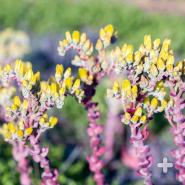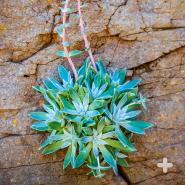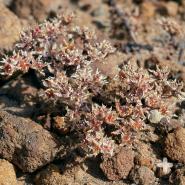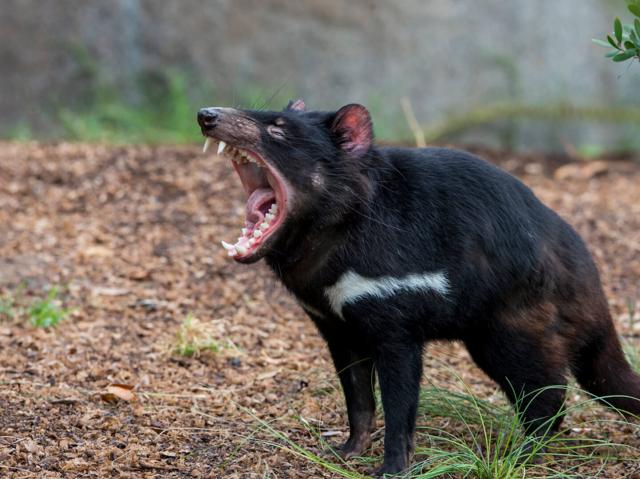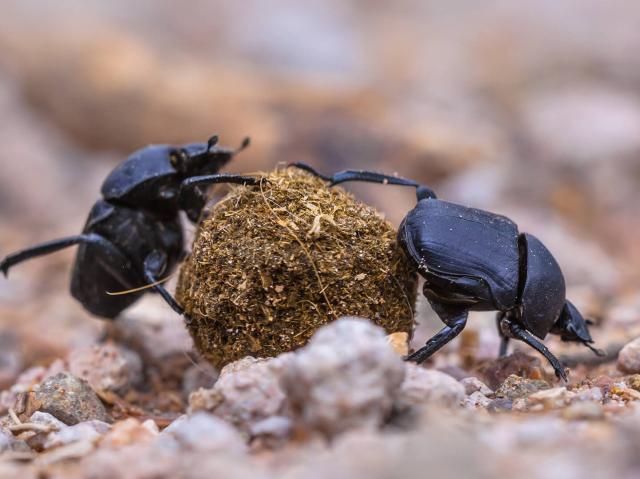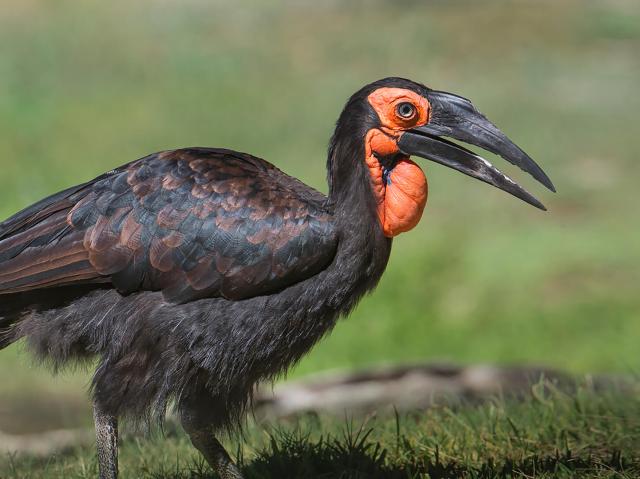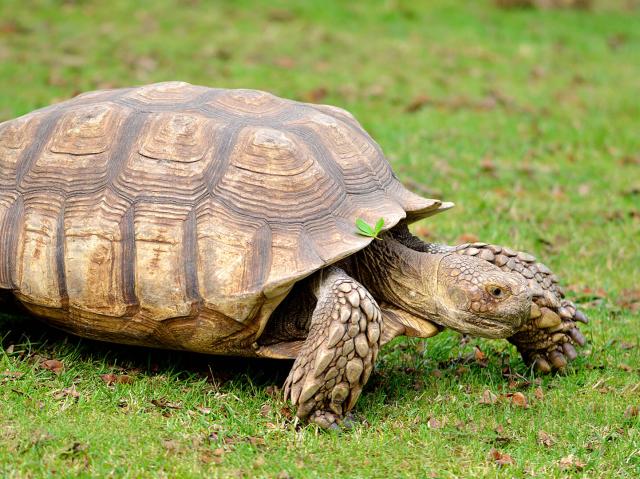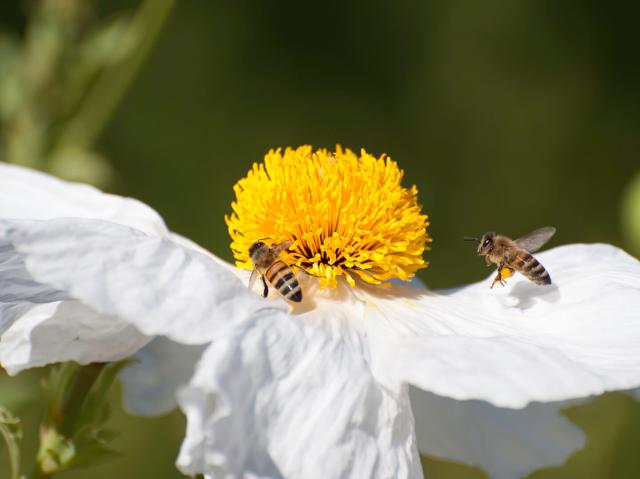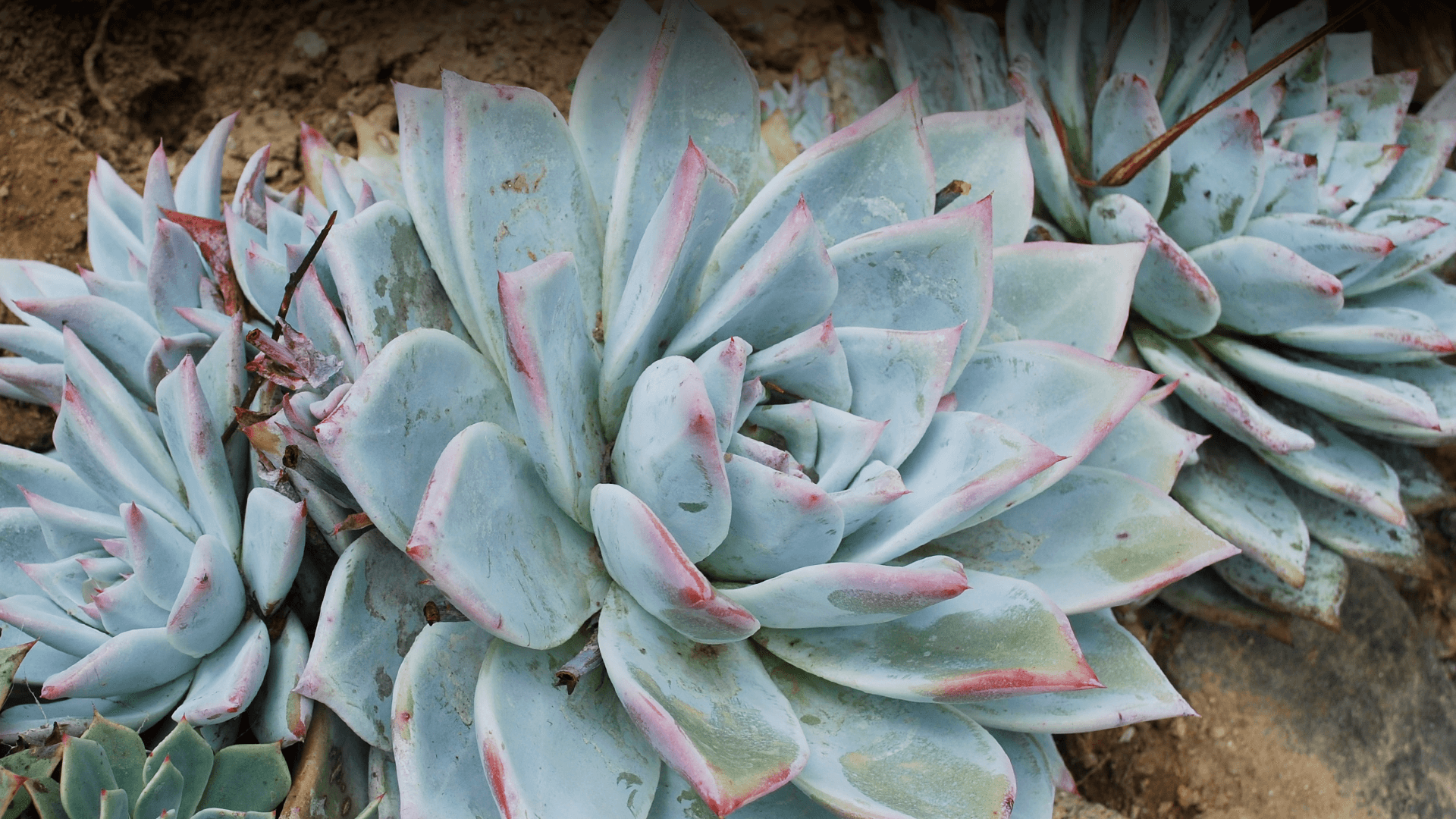
Dudleya

- Division: Tracheophyta
- Class: Magnoliopsida
- Order: Saxifragales
- Family: Crassulaceae
- Genus: Dudleya

OVERVIEW
Clinging to bluffs and rocky outcroppings and tucked among boulders, dudleyas are seemingly tough little plants. All 50-plus types (including subspecies) are endemic (limited) to California and a few nearby US states, and Mexico—found naturally nowhere else in the world. Many grow on north-facing, steep slopes. They are superbly adapted for the local climate—hot, dry summers and mild winters with low rainfall. You might hear these plants called “live-forevers,” because of their slow growth and long life span—possibly as long as 100 years. (You find the nickname applied to several other genera in this family, too.)
CHARACTERISTICS
Rosettes of flattened or tubular leaves are solitary in some dudleya species and form low, dense colonies in others. Many varieties wear a film of grayish-blue waxy material. The coating helps leaves retain water, and it helps prevent them from absorbing external water and rotting. It’s also a natural sunscreen that helps protect a plant from strong sunlight.
Fleshy, succulent leaves store water, but in the dry heat of summer, these plump perennials mostly go dormant, and leaves may begin to shrivel until they are revived by winter rains. Winter growth fuels the production of colorful flower stalks that arise from near the base of a rosette. In some of the larger species, stalks can be as long as three feet (one meter). Long-lasting, five-petaled flowers range in color from white to yellow, pink, orange, and red, and the stalk itself may be tinged with color.
CULTIVATION
A dudleya can make a striking specimen plant or potted plant, and a grouping creates a beautiful border or a low ground cover, but only a handful of species are available horticulturally. Nurseries that specialize in California native plants generally sell a variety of dudleyas, including D. attenuata, D. brittonii, D. edulis, D. pulverulenta, D. hassei, D. lanceolate, D. cymosa, and D. multicaulis.
Your location and dudleya variety dictate where to plant it. Most take full sun on the coast, but do best with some protection from summer afternoon sun in hotter inland regions. These succulents need excellent drainage, and thrive in rock or sandy soil, but they can do well in clay if planted a bit higher than grade, at an angle so that water runs off their leaves. Because a dudleya goes dormant in summer, overwatering will cause it to rot. Most species require only monthly watering or no summer water at all, depending on where you live and the variety you plant. Take care not to rub off the plant’s waxy coating with your fingers or garden tools.
CONSERVATION
Several dudleyas are federally endangered or threatened in the US, and many more are listed as endangered or rare in the state of California, in other states, or in Mexico. Dudleya smuggling in Mexico and in the US has been tied to markets in Asia, and wildlife regulation officials encourage the public to report poaching or suspicious behavior. (You can call 1-888-334-CalTIP to provide confidential information.)
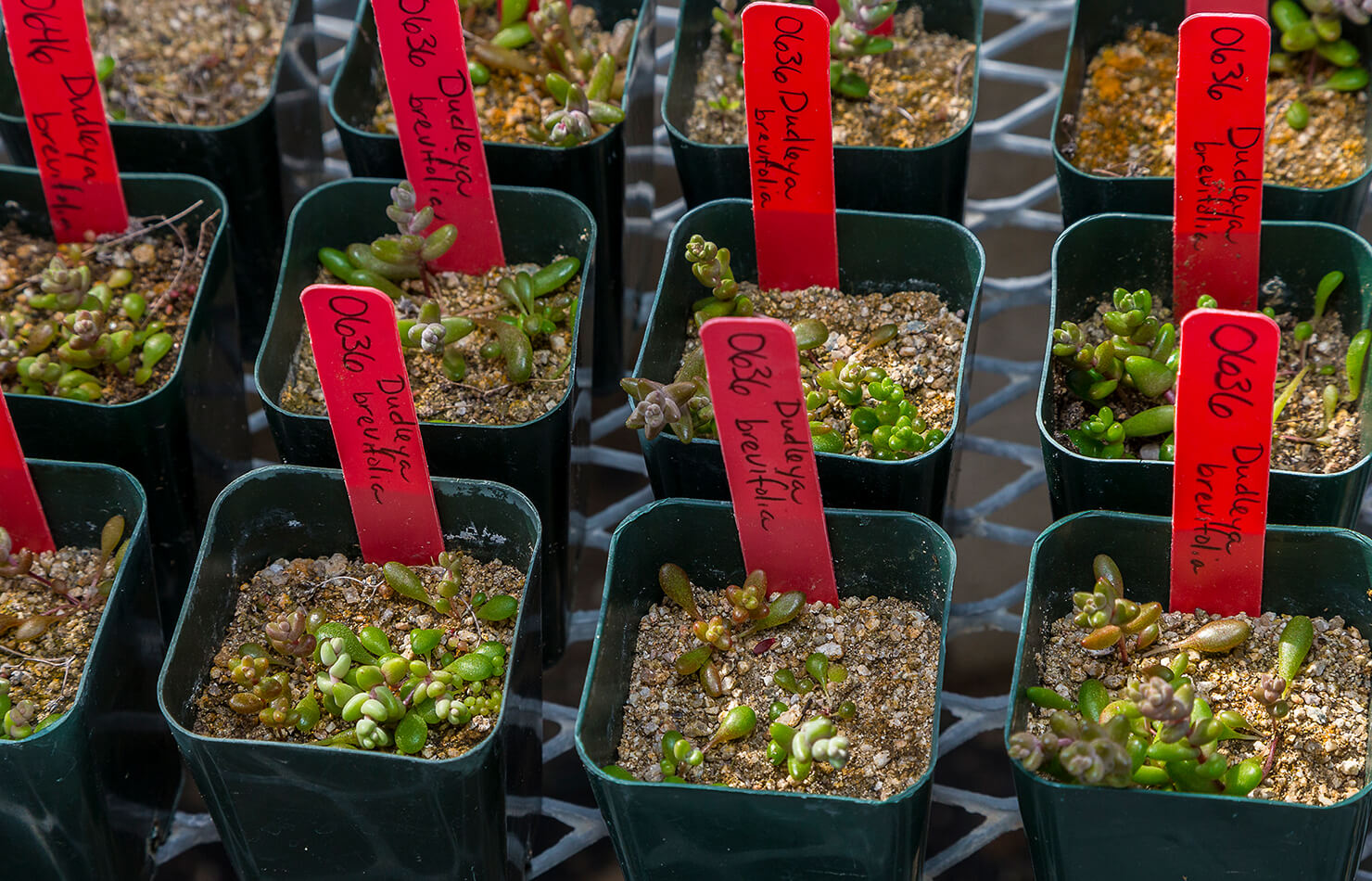
San Diego Zoo Wildlife Alliance (SDZWA) is working to conserve the rare, endangered, short-leaved dudleya, D. brevifolia. This particular species is endemic to San Diego County, where it grows in only five small populations, all on sandstone bluffs overlooking the sea. With a roughly two-inch-wide rosette that produces a five-inch flower stalk, plants are inconspicuous, and though they are located in nature preserves, their biggest threat is trampling by visitors who ignore signs and barriers. SDZWA’s plant conservation team has succeeded in collecting seeds and reintroducing tiny plants grown from seed, and additional seed is stored in the San Diego Zoo Wildlife Alliance Native Plant Seed Bank.
By supporting San Diego Zoo Wildlife Alliance, you are our ally in saving and protecting wildlife worldwide.
NAMING
Dudleyas are named for botanist William Russel Dudley, the first head of the botany department at Stanford University.
DNA DISCOVERY
Dudleya species were once included in the Echeveria genus. But DNA analysis indicates that dudleyas descended from a different common ancestor than the one that gave rise to the echeverias.
IN HIDING
Short-leaved dudleya D. brevifolia flowers and leaves completely die back in summertime—an adaptation for avoiding water loss. But even when you can’t see this petite plant, a corm (bulbous underground stem) lies dormant below the sand, ready to spring into growth mode at the first winter rains.




